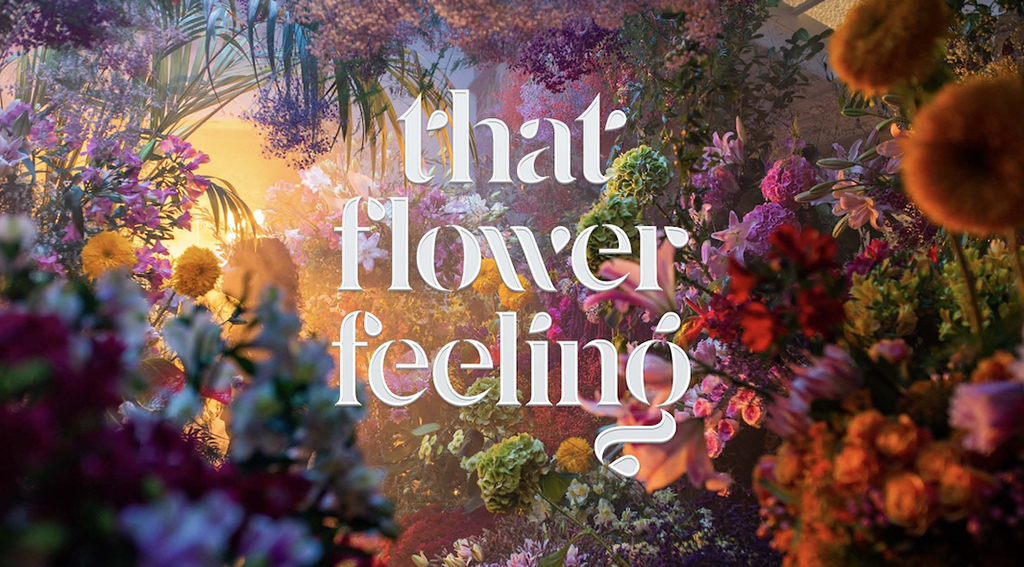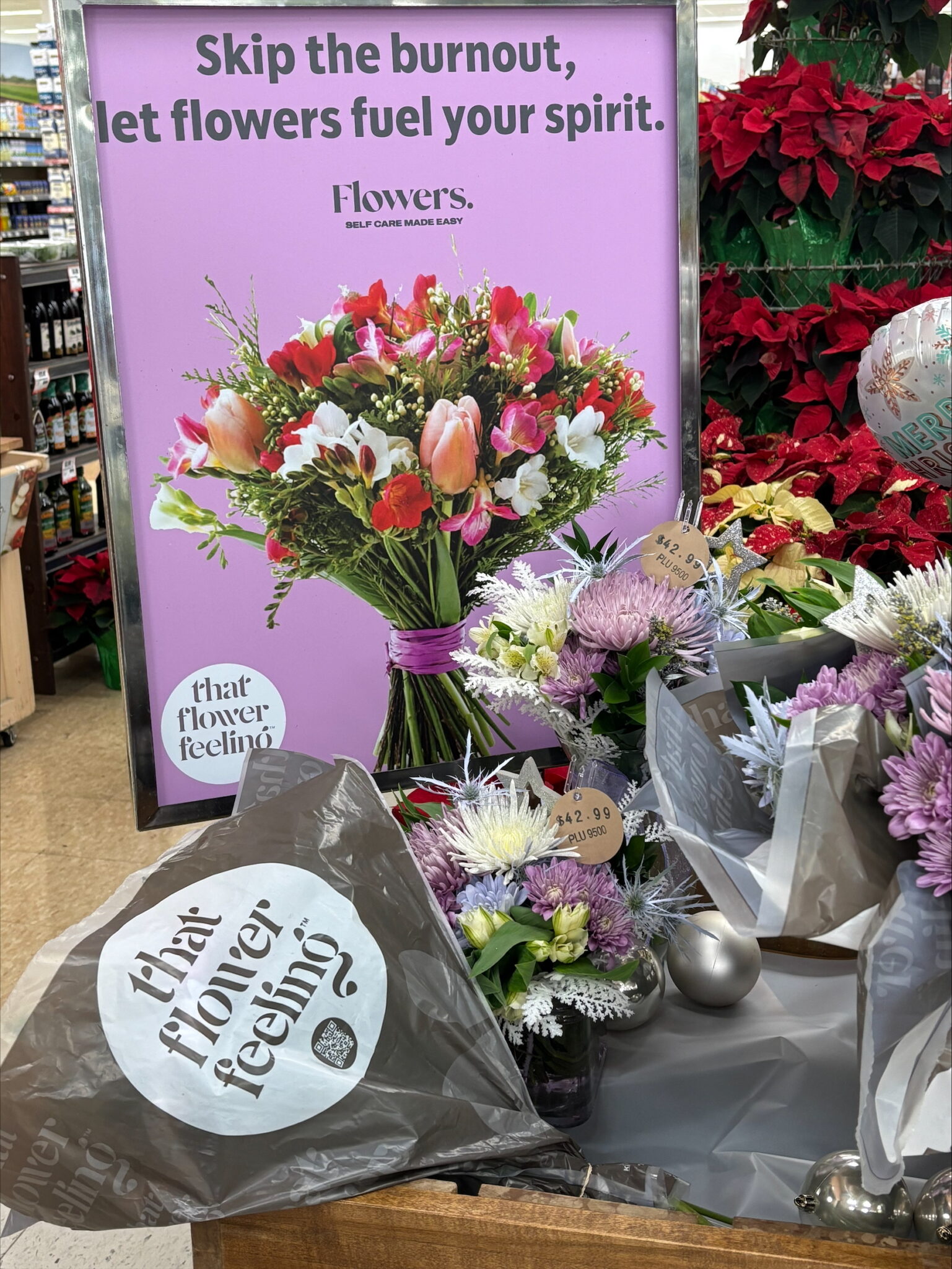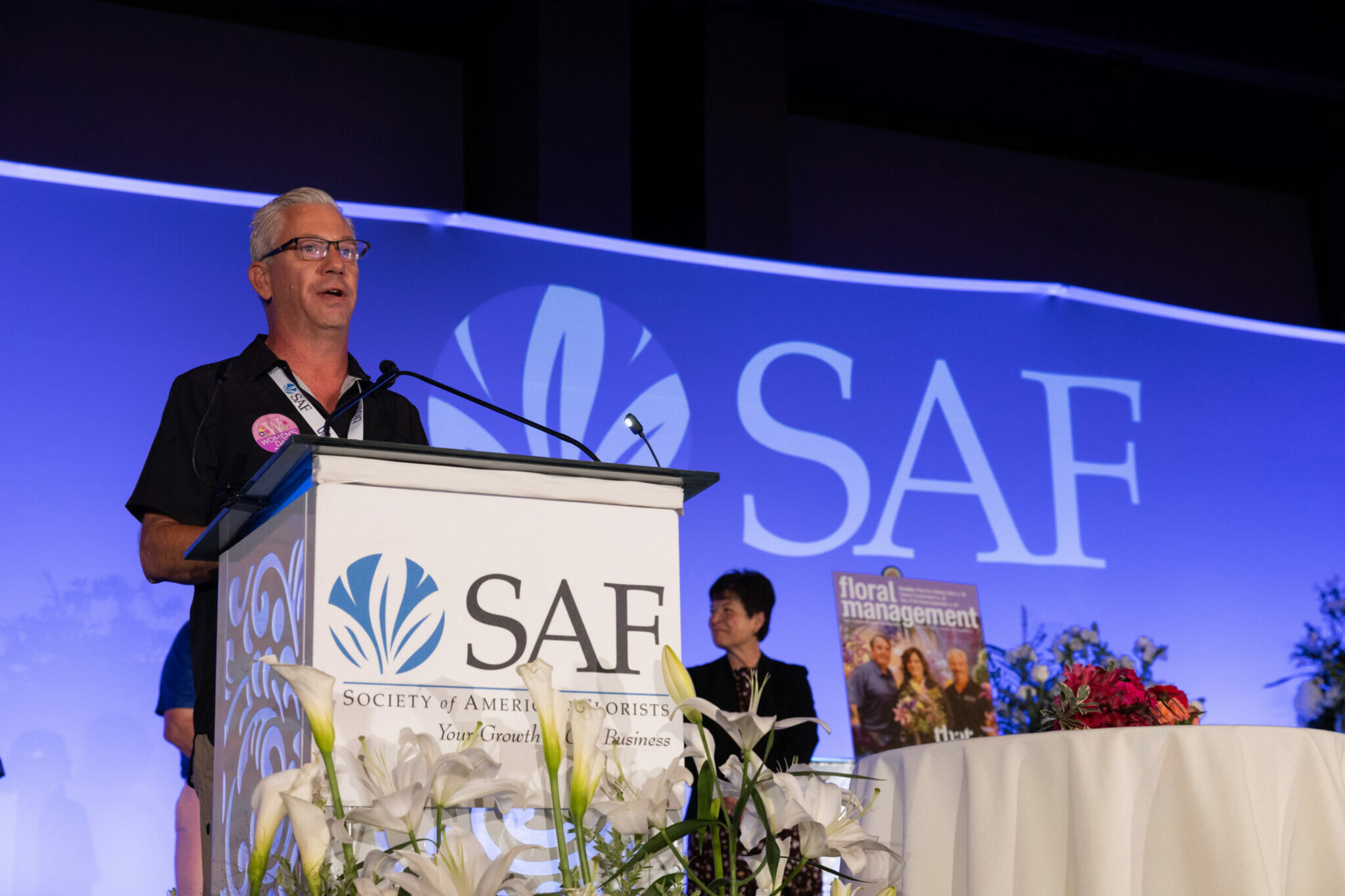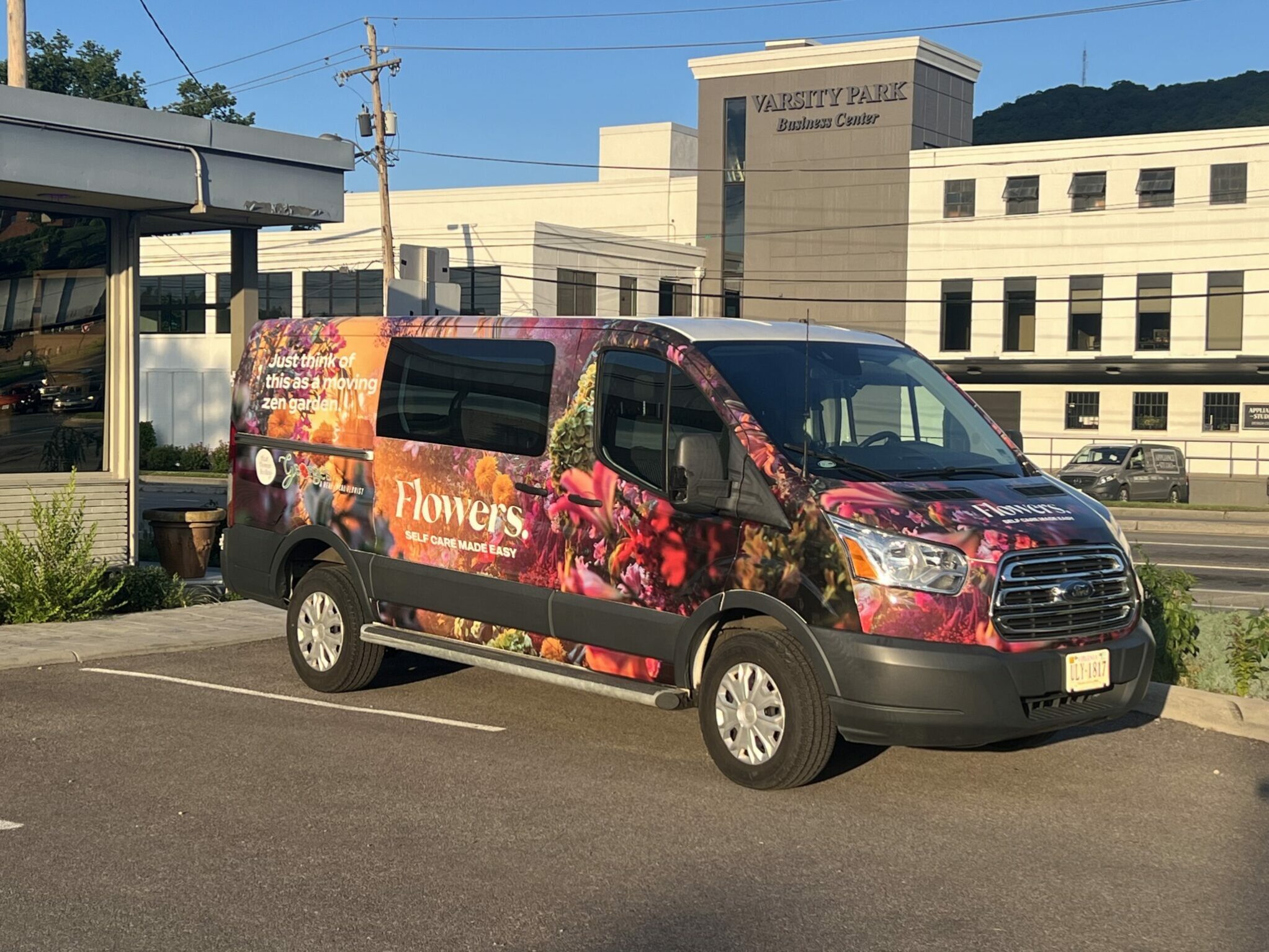
CalFlower’s new campaign, “That Flower Feeling,” sends the message that purchasing flowers is an easy form of self care. The campaign’s materials are available to all floral industry professionals to use. Photo courtesy of CalFlowers.
It’s bold. It’s bright. It’s fun. And, it touts the benefits of flowers.
“That Flower Feeling” — a marketing campaign created and funded by CalFlowers (the California Association of Flower Growers and Shippers) — is focused on helping everyone in the industry promote everyday flowers.
The newly minted campaign is “designed to be edgy, funny, and very shareable,” says CalFlowers executive director Steve Dionne, AAF. It capitalizes on the cultural preoccupation with self-care as well as the known emotional and mental-health benefits of flowers.
The ultimate goal is to “crack the culture code and change consumer attitudes” so Americans come to see flowers not just as a gift purchase for special occasions, but as part of a personal self-care routine, says Heather Lewis of the agency 180 Amsterdam, which produced the campaign.
It has the potential to reach millions of consumers in a demographic pre-determined by marketing analysis early on in the planning process. Among other defining characteristics, the target audience falls into the 25 to 35 age range, which means if they can be converted to habitual, year-round flower buyers, they could remain so for the next 40 to 50 years, Dionne points out.
The campaign is expected to generate 52.5 million impressions, via paid ads, sponsored posts, and collaborations with selected influencers on Instagram, TikTok, YouTube, and Pinterest. Audio versions of the ads will be aired on digital music-streaming platforms and selected podcasts.
The campaign’s video, which was shown to floral industry members at a virtual viewing party Jan. 13, depicts a woman’s unfortunate but humorous failures at self-care. In the end, she discovers the ease and benefits of buying flowers. From that narrative, a variety of shorter videos were cut for Instagram stories and posts.
Those materials, as well as many others, such as point-of-sale posters and printable graphic files for vehicle wraps, are available to floral-industry participants to use.
As part of a “drip strategy,” the full range of campaign materials will not be made available immediately. “We will keep trickling assets as we go,” says Dionne, “and send reminders that new content is being posted.” Guidelines on fonts and colors are provided, so that industry partners can tie in with the style of the brand while stamping the assets with their own logo and business information.
The plan is for the campaign to run the last two weeks of January, then pause for the first three weeks of February — a time when Valentine’s Day marketing would likely overwhelm the message about everyday flowers. After that, it will resume for about seven weeks, running through the second week of April.
At the end of that time, “we’ll have complete and detailed analytics,” Dionne says. Results from a survey of consumers known to have been reached by the campaign will be compared with those from a control group with no exposure to the ads. “That will give us a direct measurement of whether we have influenced people to buy flowers that otherwise might not be considering doing so,” he says.
The hope, Dionne explains, is that those results will inspire broader-based funding to keep the brand and the campaign going. “Our intent is to create a voluntary funding model,” he says, with contributions from all segments of the industry — from retail florists to trucking companies, wholesale distributors, importers, offshore farms, hardgoods suppliers, and industry associations —“anybody and everybody who’s involved in floral trading.”
Voluntary pledges would then create an all-industry marketing fund, with its own governance structure and board of directors, populated on the principle of inclusivity, “in keeping with our overall intent to make this an industry-based project,” Dionne says.
“CalFlowers was the catalyst for it, but the whole industry has to come together in order to make it happen,” he continued. “If we’re able to collect the funds that we’ll be targeting, we can convert this into something year-round, and then, every other year or third year, completely refresh the campaign.”
Asked whether the CalFlowers initiative in any way competes with efforts currently underway to create a national marketing and promotion order under the authority of the USDA, Dionne noted that discussions and research relating to a national marketing campaign were underway at CalFlowers at least five years ago, and that these efforts “were completely independent of the efforts regarding the .”
Dionne regards the parallel initiatives as “a happy coincidence” that came about in part because industry leaders are responding to a cultural shift that represents opportunity. “We’re all feeling the demand increase, the different type of consumer that is starting to engage with our industry,” he says. “We figured, this wave is rolling; let’s climb on top of it.”
Despite its name, CalFlowers is a national organization with members from all industry segments and in all 50 states — one that is, however, limited by its bylaws to a relatively small, California-based board of directors. As such, the organization was uniquely positioned to act expeditiously in getting an all-industry pilot campaign to market, Dionne says.
When the campaign has run its course it can inform and inspire further conversations about how the industry can best move forward to ensure that, in the words of the CalFlowers mission statement, “more Americans enjoy more flowers more often.”
Industry members can get a taste of the CalFlowers campaign at thatflowerfeeling.org. To download campaign materials, first email info@thatflowerfeeling.org for a passcode, as access is restricted to floral-industry professionals.
A recording of the campaign viewing party on Jan. 13 is available on YouTube.
Bruce Wright is a contributing writer for the Society of American Florists.






